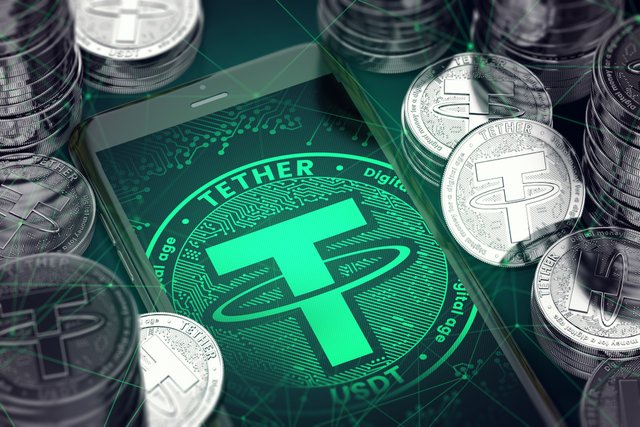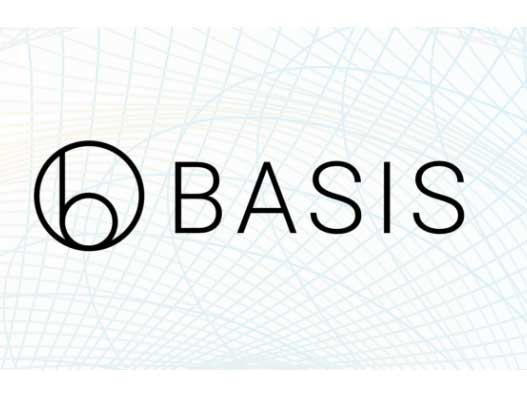Introduction to Stable Coins【Written by Mike Mu, Translated by Harrison Goldsmith】
There has been many Scholars lately that has a strong stance on how
“The price of tokens must be stable, Bitcoin could not be a legitimate currency due to it’s volatility”
I agree with this scholar’s stance, because it is the supply and demand that forms the market economy, However, the high fluctuations in the value of the currency causes the price of the currency marked on commodities to also change, this would cause chaos and terror in the market.
Many scholars believe that cryptocurrencies are not currencies, so in order to solve this volatility problem, the stable coin is born.
Stable Coins are cryptourrencies that are the opposite of being volatile, they are based on fiat money commonly used in today’s society which remains rather stable. Many stable coins hold a 1 to 1 ratio with the USD. There are also many stable coins that are based off gold or other things in the real world. This type of linking between stable coins and physical goods or fiat currencies is called Pegging.
Due to the fact that the worth of the token is pegged to an actual currency or a real world valuable thing, it has a large advantage as a payment method compared to Bitcoin and Ethereum. As time passes, It seems like cryptocurrencys’ future will lean towards a more stable future. For cryptocurrencies like Bitcoin or Ethereum to be widely adapted, they must fluctuate less, and it seems like it will still take a long time before their value would match the stability of fiat currencies. That is precisely why many people are turning their attention to Stable Coins.
So how do Stable Coins remain stable? It seems like it would be rather easy but quite the contrary, due to the fact that they’re is on the market, the supply and demand determines the worth of the tokens, so it is extremely difficult to keep the price of the tokens fixed. The demand of the tokens are always changing, how a stable coin works internally is not the most easy thing to understand. But before we get into it, how do you think stable coins maintain their value? And why would people want to use them?
In this article, we will take a closer look at these three subjects below:
- Fiat backed Stable Coins
- Crypto backed Stable Coins
- The Adjustment of the Stable Coin’s Supply
Fiat-Collateralized Stablecoin
Some Companies or Institutions would release the Stablecoins based on the fiat currency they have in their own accounts. If the institution does everything right, the token would worth completely the same as the pegged fiat currency. This is the easiest and most reliable method to do a StableCoin.
This method, however could be quite troublesome because the institution who released the coin was total control over the tokens, The users of the token would have to trust the institution in control of it. This is a ‘Centralized’ method. When you buy into a Centralized StableCoin (USDT), They become the creditor of the coin, therefore somewhat risky.
The reason why cryptocurrencies like Bitcoin exist is that the very essence of it is to not have third party middleman affecting its ecosystem, but if one uses fiat backed StableCoins The institution would take the upper hand (like what middlemen do) and have full control in the decisions and future of the company, besides that lack of decentralization, people will also need to trust that these company has enough Fiat Currency to back the StableCoin they sell.

The Iconic USDT (USD Tether) is one of the top StableCoins released by Tether. So far there’s over 20 Billion worth of USDT in circulation, which means Tether supposedly would need to have that amount of money in USD. There were some doubts on whether Tether actually has the 20 billion , This way of operating isn’t really transparent at all, this is because USDT’s fate is completely Tether’s hands.
DigixGold Token uses the same method, except it is backed by gold instead of USD.
There are many types of cryptocurrencies in exchanges, there always must be a token that could serve as a reference point for other tokens, and this is where StableCoins like USDT shine. The reason is because it is extremely difficult to have fiat currency on exchanges, that is because fiat currencies are limited by the laws and regulations, all the procedures are very strict and just almost not worth the effort, and that’s why most exchanges do fine without fiat currency and they would just list USDT instead of USD.
Pros and Cons
- Pros: Easy to make them stable this way
- Cons: Centralized
- Similar StableCoins: TrueUSD, DigixGold
Crypto-collateralized Stablecoin
For StableCoins to remain decentralized, It mustn’t be released by institutions. In order for the tokens to remain stable however, we must rely on smart contracts for those kind of tokens, those tokens are most commonly known as Crypto-Collateralized Stablecoins. Those type are tokens are very different from tether due to the fact that the tokens aren’t held by the institution that released them, The tokens themselves are held on accounts created on the smart contract, and due to the fact that fiat currencies cannot be stored on this smart contract, the stablecoin can only be converted into cryptocurrencies like Bitcoin and Ethereum.
Basically, as a stable coin, it is written on the smart contract “if you give me the token, I will give you cryptocurrencies that’s worth 1 USD”. Compared to Tether, the encumbered assets will be converted from US dollars to Ethereum instead of directly to USD.
There are problems with this model. The cryptocurrency price of the encumbered assets are highly volatile if it is for example guaranteed with Ethereum of a value of $100 USD, if the ETH dropped to 80 USD, then the $100 worth of Ether pegged to the stablecoin could not remain stable due to the volatility of the collateral assets. Therefore, the cryptocurrency-based stable currency will use the "over-collateralization" method. The over-collateralization means that more guarantee assets are needed than the actual stable currency. For example: I have 180 dollars worth of ETH pegged to the stablecoins I have, but I would only have 100 stable coins (less than the original amount), so that if the price of my ETH drops to 150 dollars, I can still maintain the 100 stablecoin’s value.
The Crypto-collateralized Stablecoin we will look at today is called Dai, Dai is released by an organization called Maker, Maker also operates the MKR Token, Why would an organization like Maker be necessary? They exist to to deal with things that cannot be done by smart contracts in the (Dai) stablecoin business, representing data reports with ETH/USD price changes and mortgage rates determined by changes in market conditions. When the value of the guaranty assets of the dai coins is reduced, the guarantee ratio is increased, and when the value of the collateral assets is increased, the guarantee ratio is lowered.

The Maker organization specializes in the risk management of Dai coins. When we are in crypto economics, every action or maintenance of the blockchain will receive a reward. If you make a mistake, there will be a penalty, so when the user produces Dai, he will pay a small fee, Maker members or those who own MKR tokens will be compensated for handling fees.
If the Maker organization manages the Dai currency badly, causing the value of the Dai coin to decrease. If this situation continues, the Dai Coin smart contract will automatically create MKR tokens and sell it to the market, and sell the money to supplement the money for the guarantee loss. As the supply of MKR coins increases, the value of MKR coins naturally falls, so the Maker organization must strictly manage the portion of the guarantee.
The principle of Maker organization on managing Stablecoin
Because there is a guaranteed loan of Ethereum, tha’s why Dai coins can be issued.
For example: Daxiong is an investor in Ethereum. He keeps ETH worth $150. He suddenly needs to use money urgently, but he doesn't want to sell his own ETH. At this time, using Dai's technology, the ETH with a value of 150 dollars can be collected. To the $100 equivalent of Dai coin, Daxiong urgently uses the Dai coin of the value of 100 dollars immediately. When the money is repaid in the future, the $100 Dai coin can re-receive the original ETH of $150, which is the price of ETH.
Daxiong can make a profit.This method is especially useful for people who want to keep ETH or want to use it quickly. Dai coins can also be considered as a tool for financial leverage.
Pros and Cons:
Pros: decentralization
Cons: the danger of falling prices, complicated structure
Similar coins: Haven
Seignorage Share
The reason for the fluctuation of the cryptocurrency price is because the money supply is fixed. However, when the demand increases, the fluctuation of the price rises and falls on a large scale. If the money supply is adjusted according to the demand, when the demand for tokens increases, the supply of the token increases. Once the demand for tokens decreases, the amount of issued currency naturally decreases. In theory, the value of the currency can be maintained. If it can be done to this extent, it will not require any mortgage in the previous two ways.
The automatic adjustment of the money supply has only recently begun to be discussed. The currency represented by this method is Basecoin. Since October 2017, ICO has attracted some attention from the investment companies such as Polychain Capital, Metastable Capital and Pantera Capital.

The core of Basecoin's approach is how to accurately control the money supply if the intermediary does not interfere with the management of the money supply. When the price of the stable currency is less than 1 US dollar, the money supply is reduced. On the other hand, when the price of the stable currency exceeds one US dollar. The money supply will increase. Basecoin has three tokens to control the token supply
1.Basecoin: It is a token that is linked to USD and is used in trading.
2.Base Bonds: called debt. The selling price of the bonds is less than $1, and then the debt is exchanged into 1Basecoin on the blockchain.
3.Base Shares: called stocks. The initial decision on currency issuance is constant. Once the debt cannot control the money supply, the holders will get Basecoin and increase the supply of tokens.
The following is a brief description of the Basecoin principle.
When you need to reduce the money supply, Basecoin will automatically issue bonds. In the bonds, “The Basecoin price will rise and the bonds will be replaced with 1Basecoin”, so investors invest in the bonds for potential profit, which will reduce the number of stablecoins in the market, so the price of Basecoin naturally rises. Conversely, when you want to increase the money supply, the new Basecoin will be distributed to the debtor, which will increase the amount of tokens circulating in the market. If this method is in operation, the price of Basecoin will not exceed 1 US dollar. At the same time, the currency will be issued again, and the currency will be distributed to the shareholders. The shareholders will buy stocks if they believe that the demand for Basecoin will increase in the future.
It sounds complicated, but overall it looks very similar to the current financial market. If you believe that the country's future economy will grow, You will invest in financial products such as debts or weighted indices. Basecoin is the same, if you think Basecoin is in the future. The amount of usage will increase and investors will invest in Base Bonds and Base Shares. Basecoin's system can then control the amount of money in the market. In fact, it is very similar to the way the central banks control the amount of money in circulation on the market.
Basecoin's problems
The problem with Basecoin is that when users lose confidence in the future growth of the entire system, Basecoin prices will plummet. When Basecoin's price is less than $1, more bonds will be issued, but after the issuance of bonds, Reducing the amount of money in the market, because of the order of debt liquidation, this problem will result in a lower chance of redemption of later issuance of bonds, so investors have to bear additional risks.
Just like a large amount of debt in the country, it will eventually lead to bankruptcy in the country.
Therefore, the price of debt is getting cheaper and cheaper. The stable currency that is reduced due to cheaper debts will also be reduced. If this downward spiral does not stop, the issuance of bonds will accelerate, leading to a decline in the value of debt.
Under the circumstance of a vicious cycle, Basecoin will lose trust and face the collapse of the entire monetary system. Basecoin uses the expiration date and the lowest price of the bond to prevent this type of vicious cycle, but before the actual implementation, the market is always unpredictable.
Pros and Cons:
Pros : no mortgage, decentralized
Cons: complex structure and trust for future growth
in conclusion
The three methods above are not perfect. Each stable currency has its own advantages and disadvantages. The best way is to try different combinations as much as possible, instead of selecting the only winner among these choices. The only one surviving is the best option, so it is possible that the time required for cryptocurrency to be introduced into the global monetary system may be accelerated due to Stablecoins.
source:
Https://hackernoon.com/stablecoins-designing-a-price-stable…
Https://multicoin.capital/…/…/17/an-overview-of-stablecoins/
Great Article , Thanks friend
Downvoting a post can decrease pending rewards and make it less visible. Common reasons:
Submit
thanks for taking your time to read it!
Downvoting a post can decrease pending rewards and make it less visible. Common reasons:
Submit